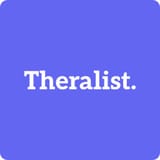Mental Health Coverage in Canada: EAP, Insurance, and Provincial Benefits Explained
Navigate Canada's complex mental health coverage system. Learn about EAP counselling, insurance benefits, and provincial programs to access affordable therapy and mental health support.

Navigating mental health coverage in Canada can feel like solving a complex puzzle. Between Employee Assistance Programs, provincial health benefits, and private insurance, understanding what's available to you—and how to access it—is crucial for getting the support you need.
More than one-third of Canadians with mental health concerns don't seek help due to cost barriers or confusion about available services. This comprehensive guide breaks down your options, helping you understand how to maximise your mental health benefits and access affordable care across Canada.
Understanding Canada's Mental Health Coverage Landscape
Canada's mental health system operates through multiple layers of coverage, each with distinct advantages and limitations. Unlike our universal healthcare system that covers most medical services, mental health support requires navigating a patchwork of provincial programs, employer benefits, and private insurance options.
The reality is that while psychiatric care through a physician is covered under provincial health plans, most therapeutic services—including psychology and counselling—fall outside public coverage. This gap has created a system where access often depends on your employment benefits, financial resources, or ability to navigate community programs.
Key Insight: According to the Canadian Medical Association, provincial health plans typically cover psychiatrist visits and hospital-based mental health services, but private practice therapy usually requires additional coverage or out-of-pocket payment.
Understanding this landscape empowers you to make informed decisions about your mental health care and access multiple support channels simultaneously.
Provincial Health Coverage: What's Actually Included
Every Canadian province and territory provides some level of mental health coverage through their public health systems, though the scope varies significantly across regions.
Services Covered Across Canada
Provincial health plans consistently cover medically necessary mental health services provided by physicians. This includes consultations with psychiatrists for diagnosis, medication management, and some therapeutic interventions. Hospital-based mental health programs, crisis intervention services, and emergency psychiatric care are also universally covered.
Community mental health centres funded by provincial governments offer additional support, though availability and wait times vary considerably. Some provinces have expanded coverage to include limited psychology services for specific populations or conditions.
Provincial Variations You Should Know
Ontario residents can access psychiatrist services through OHIP with a family doctor referral. The province also funds Family Health Teams that may include counselling services at no cost. Ontario's BounceBack program provides free cognitive behavioural therapy coaching for residents experiencing mild to moderate depression, anxiety, or stress.
British Columbia covers psychiatric services through MSP and has been expanding access through initiatives like the Improved Access and Care for Everyone (iACE) program. The province also offers BounceBack services with both telephone coaching and online resources.
Alberta provides psychiatric coverage through AHCIP and offers some psychology services in specific healthcare settings. Primary Care Networks across the province may include mental health support as part of integrated care teams.
Quebec operates under RAMQ for psychiatric services and has a unique network of CLSCs (community health and social service centres) that provide mental health support. The province has distinct professional regulations for psychotherapy that differ from other regions.
Atlantic provinces generally offer more limited community mental health resources, making private insurance particularly important for comprehensive coverage. As of 2025, BounceBack coaching is no longer available in Nova Scotia, Prince Edward Island, and Newfoundland and Labrador, though online resources remain accessible.
The key limitation across all provinces is that private practice psychologists, psychotherapists, and clinical counsellors are not covered unless they work within publicly funded healthcare settings.
Employee Assistance Programs: Your First Line of Support
Employee Assistance Programs represent one of the most accessible entry points for mental health support in Canada. Most medium to large employers offer these confidential services at no cost to employees and their immediate family members.
What EAP Services Actually Provide
EAP counselling typically includes short-term therapy sessions, usually ranging from three to eight sessions per issue, though some programs offer extended support. These services are designed to address immediate concerns and provide practical coping strategies for workplace stress, relationship challenges, family issues, grief, and mental health concerns.
Beyond counselling, EAPs often include 24/7 crisis support, management consultation services, legal and financial advice, and referrals to community resources. Many programs now offer online platforms with self-help tools, webinars, and digital mental health resources.
The Canadian Centre for Occupational Health and Safety emphasises that EAP services are strictly confidential—your employer cannot access information about your participation unless you provide written consent.
Accessing Your EAP Effectively
Contact your human resources department to obtain your EAP provider information and access details. Most programs operate 24/7 helplines where you can speak immediately with a mental health professional for crisis support or schedule ongoing sessions.
When calling, be prepared to discuss your concerns openly. The intake process helps match you with appropriate resources and determines whether short-term EAP support is sufficient or if referrals to longer-term services are needed.
For federal employees, Health Canada's EAP serves over 90 departments and agencies, providing appointments typically within five business days and offering specialised support for various populations, including enhanced services for Black public servants.
Private Insurance: Bridging the Coverage Gap
Extended health benefits through employers or individual insurance plans play a crucial role in accessing comprehensive mental health care. These plans typically cover services not included in provincial health coverage.
Understanding Your Coverage Options
Most group insurance plans allocate between $500 and $2,500 annually for psychology services, covering approximately eight to twenty sessions per year. Coverage for registered clinical counsellors, social workers, and psychotherapists varies significantly but typically ranges from $300 to $1,500 annually.
Many plans now include coverage for online therapy platforms and virtual mental health services, recognising the growing importance of digital care options. Some insurers require pre-approval or physician referrals, while others allow direct access to covered professionals.
Maximising Your Insurance Benefits
Before beginning therapy, review your specific coverage details, including annual maximums, session limits, and covered professional credentials. Verify whether your plan offers direct billing options, which can eliminate upfront costs and simplify the payment process.
Consider timing your therapy strategically around benefit renewal dates, especially if you anticipate needing support that might exceed annual limits. Many Canadians successfully combine EAP services for immediate support with insurance coverage for longer-term therapy.
Keep detailed records of all sessions and expenses, and submit claims promptly to avoid processing delays. If you're using multiple coverage sources, ensure you understand coordination of benefits rules to prevent claim rejections.
Strategic Coverage Coordination
The most effective approach to mental health support often involves combining multiple coverage sources rather than relying on a single option.
Start with EAP services for immediate support and initial assessment. These programs provide rapid access and can help clarify your needs while you explore longer-term options. EAP participation doesn't affect your insurance benefits, making it an ideal first step.
Transition to insurance-covered therapy for ongoing support once you've identified your needs and found a suitable provider. This approach preserves your annual insurance limits for sustained care while utilising EAP resources for crisis support or family members who may also need assistance.
Supplement with provincial services as appropriate, particularly for psychiatric care, medication management, or specialised programs. Community mental health resources can provide ongoing support groups and workshops that complement individual therapy.
Digital Mental Health Resources
Canada's mental health landscape increasingly includes digital options that can enhance traditional care or provide standalone support.
Publicly Funded Digital Programs
BounceBack, managed by the Canadian Mental Health Association, offers free cognitive behavioural therapy through telephone coaching and online modules. The program is currently available in British Columbia, Ontario, and parts of Manitoba, with online resources accessible nationwide.
Various provinces have developed digital mental health platforms and crisis support services. These range from self-guided CBT programs to virtual support groups and educational resources.
Insurance-Covered Digital Services
Many private insurance plans now cover text-based therapy platforms, video counselling sessions, and mental health apps with professional oversight. These options can be particularly valuable for Canadians in remote areas or those with mobility limitations.
When exploring digital options, verify that your chosen platform employs licensed Canadian professionals and meets privacy standards required for healthcare information.
Finding Qualified Mental Health Professionals
Understanding professional credentials helps ensure you're accessing appropriate care and maximising your coverage benefits.
Registered Psychologists hold doctoral or master's degrees in psychology and maintain provincial registration. They provide the highest level of insurance coverage and can conduct psychological assessments and testing.
Registered Clinical Counsellors have master's degrees in counselling or related fields and provincial registration where available. Insurance recognition for these professionals is growing, particularly in British Columbia and Alberta.
Registered Psychotherapists are regulated in Ontario, Quebec, and several other provinces. They provide talk therapy and counselling with specific professional standards and ongoing education requirements.
Clinical Social Workers hold master's degrees in social work and provide therapy alongside practical support services. Coverage varies significantly by insurance plan.
When selecting a provider, confirm their professional credentials, registration status, and experience with your specific concerns. Ask about their approach to coordinating with other healthcare providers and their familiarity with insurance billing processes.
Practical Steps for Accessing Care
Begin by assessing your available resources. Contact your HR department about EAP services, review your insurance coverage details, and identify community resources in your area.
If you're experiencing crisis symptoms, prioritise immediate support through EAP crisis lines, provincial crisis services, or emergency departments. For ongoing concerns, start with your family doctor, who can provide referrals and coordinate care across different providers.
Create a support plan that outlines your preferred approaches, budget considerations, and timeline for accessing care. This planning helps you navigate the system more effectively and reduces barriers when you're experiencing distress.
Remember: The Mental Health Commission of Canada emphasises that seeking help is a sign of strength, and multiple pathways exist to access appropriate support regardless of your financial situation.
Cost-Effective Strategies
Several approaches can help make mental health care more affordable and accessible.
University training clinics often provide reduced-cost services with graduate students under professional supervision. Community mental health organisations frequently offer sliding-scale fees based on income.
Consider group therapy options, which many insurance plans cover more generously than individual sessions. Support groups and peer counselling programs provide ongoing community connections at minimal cost.
Plan your care strategically by using EAP services for assessment and short-term support while reserving insurance benefits for specialised or longer-term therapy needs.
When to Seek Immediate Help
Certain situations require immediate professional attention regardless of coverage considerations.
Contact 911, visit your nearest emergency department, or call your provincial crisis line if you're experiencing thoughts of self-harm, suicide, or harming others. Most EAP programs provide 24/7 crisis support that can offer immediate assistance while coordinating additional resources.
For urgent but non-crisis situations, EAP services often provide same-day support. Family doctors, walk-in clinics, and community mental health crisis teams can also provide timely intervention.
Crisis Services Canada operates a national suicide prevention service at 9-8-8, available 24/7 in English and French.
Frequently Asked Questions
Does OHIP cover therapy sessions with psychologists?
OHIP covers psychiatrist visits with a family doctor referral but does not cover private practice psychologists. However, psychology services provided through Family Health Teams or hospital settings may be covered. Private insurance is typically needed for comprehensive psychology coverage.
How many EAP sessions can I access per year?
Most EAP programs provide three to eight sessions per issue, though some offer extended support. The number of sessions isn't typically capped annually—you can access support for multiple different issues throughout the year. Contact your specific EAP provider for detailed information about your program's structure.
Can I use both EAP and insurance coverage simultaneously?
Yes, you can use EAP services alongside insurance-covered therapy. EAP participation doesn't affect your insurance benefits, making it possible to access immediate support through EAP while pursuing longer-term therapy through insurance. This approach maximises your available resources.
What's the difference between a psychologist and a psychotherapist in terms of coverage?
Psychologists typically receive higher insurance coverage limits due to their doctoral-level training and ability to conduct assessments. Psychotherapists may have more limited coverage, though this varies by province and insurance plan. Both professionals can provide effective therapy—the choice often depends on your specific needs and coverage limits.
Are online therapy services covered by Canadian insurance plans?
Many insurance plans now cover virtual therapy sessions, especially since the COVID-19 pandemic expanded digital healthcare options. Coverage varies by provider and may require that the therapist be licensed in your province. Check with your insurance provider about their specific digital therapy policies.
Ready to Take the Next Step?
At Theralist, we understand the complexity of navigating Canada's mental health system. Our platform connects you with licensed Canadian mental health professionals who accept insurance and understand the unique challenges faced by Canadians seeking care.
Whether you're looking to use your EAP benefits, maximise insurance coverage, or explore affordable therapy options, our team can help you find the right fit. Start your journey toward better mental health with professionals who understand both the Canadian healthcare landscape and your individual needs.
Sources:
- Canadian Medical Association. (2024). What mental health services are covered in Canada?
- Mental Health Commission of Canada. (2023). Where to Get Care: A Guide to Navigating Public and Private Mental Health Services in Canada.
- Government of Canada. (2025). Employee Assistance Services: Employee Assistance Program.
- Canadian Mental Health Association. (2025). BounceBack Program FAQs.
- Canadian Centre for Occupational Health and Safety. Employee Assistance Programs (EAP).
Disclaimer: This article is for informational purposes only and does not constitute medical or insurance advice. Coverage details vary significantly by province, employer, and insurance provider. Always consult with your healthcare providers, HR department, and insurance representatives for specific information about your coverage and treatment options.





